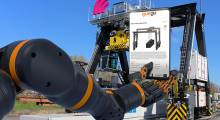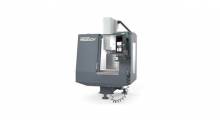Global demand for material handling products is projected to increase close to 5% annually through 2018 to $140 billion, according to new research by the Freedonia Group.
According to the report, gains will be strongest for sales of advanced equipment such as automated conveyors and automated guided vehicles (AGVs), which help to curtail labor costs. Energy efficient products such as electric lift trucks, the report continued, will also see solid gains as end users seek to reduce costs.
In a recent interview, Freedonia senior industry analyst Mike Deneen said the strong gains forecasted for automated equipment reflect a shift in manufacturers’ preference toward products suited to integration into larger-scale factory automation and automated warehouse environments. Led by automated storage and retrieval systems (AS/RS), Deneen noted that AGVs and robotics in the U.S. are primed for strong growth of nearly 6%.
“Following the recession, many companies don’t want to rehire extensively, and combined with rising U.S. labor costs, there are more incentives to get into higher technology,” Deneen said, adding that the aftermarket is also becoming more important as technology becomes more advanced. “It’s not just a matter of finding, say, lift truck parts, which are available anywhere. Now companies are looking for suppliers who can deal with the hardware, software and the entire package going forward. They’re looking for more of a relationship, and more suppliers are working to provide the whole package as opposed to any one piece. That’s a trend even beyond durable goods.”
One segment that hasn’t been doing well, Deneen suggested, is hoists and cranes, where growth is lagging as compared to lift trucks and conveyors. Deneen said hoist and crane systems are seen as a larger equipment investment that will be dependent on improved macroeconomic indicators.
Globally, Deneen said he is Brazil appears ready to post strong growth, but he is not as bullish about Brazil as he is about India and China, where the investment outlook is very good. “China has been the hot thing in the last 15-20 years, but there are some concerns that, as labor costs go up, at some point it might cool off a bit,” Deneen said. “In any case, Asia will become a larger portion of the pie going forward. Things are going pretty well here at home, and the U.S. will continue to be an extremely important player, but as Asia grows the U.S. will make up a smaller share of the pie. As for Russia, it’s kind of a wild card right now.”
The report cited rising manufacturing output in India and China that will spur demand for equipment to facilitate distribution and production. West European markets include many of the most intensive users of material handling equipment in the world, the report stated, because manufacturers in the region have long been among the leaders in adopting automated equipment as a response to high domestic labor costs. The U.S. will continue to be the world’s largest material handling product market, benefiting from an improved outlook for fixed investment spending. This will encourage U.S. manufacturers to invest in new equipment, particularly labor-saving automated products.
Other highlights from the report
Durable goods manufacturers will account for nearly 50% of material handling demand through 2018. Advances will result from increased production in durable goods sectors such as machinery and fabricated metals. Sales of material handling products to nondurable goods manufacturers will also see gains, reflecting strong outlooks for the chemical and the food and beverage markets. Other markets, which include trade and distribution companies, will see growth above the global average, spurred by the rising prevalence of international trade, which requires goods to be handled at more points along the distribution chain than domestic commerce.
About the Author
Follow Robotics 24/7 on Linkedin
About the Author
Follow Robotics 24/7 on Linkedin
Article topics
Email Sign Up















